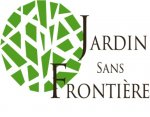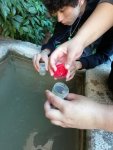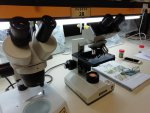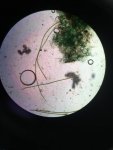accueil site > 45. Archives > Paysage et patrimoine > 12. Pedagogic tools > 17. Pedagogic tools > 0991. 19 - Different like two drops of water
-
45. Archives
-
Paysage et patrimoine
-
01. Fiches pédagogiques
Disciplines
-
01. Teaching materials
Disciplines
-
02. Jardin sans frontière : une école pour développer les compétences -clés en Europe
- 04. Partenaires
- 05. Rencontres transnationales
- 14. À l’école du jardin. Mobilités de formation dans les jardins d’Europe
- 15. À l’école européenne du jardin. Paroles de formateurs sur leurs formations "entre pairs"
- 16. A l’école auropéenne du jardin. Paroles d’apprenants sur leurs mobilités Erasmus+
- 19. Petit glossaire "européen" du jardin
- 20. Dissémination
- 21. Exploitation locale du projet
- 03. Un nouvel Erasmus+ : Le bleu européen comme étendard contre l’exclusion des adultes
-
09. Erasmus+ partenariato
-
Cammini del Blu in Europa
- 01. Incontri transnazionali
- 05. Progetti blu di partners
- 10. Percorsi europei del Blu
- 20. Storie blu
- 40. Disseminazione
- 43. Transcultural Carpet Blue
- 45. Missive blu
- 46. Glossario blu
- 47. Schede didattiche "Pedagogia del colore blu in Europa"
- 48. Illustrazioni delle schede didattiche : Mostra delle opere degli studenti
-
Giardino senza frontiere. Una scuola per lo slivuppo di competenze chiave in Europa
- 04. Partners
- 05. Riunioni transnazionali
- 14. Alla scuola del giardino. Mobilità di formazione nei giardini d’Europa
- 15. Alla scuola del Giardino. Parole di formatori sul loro addestramento "tra pari"
- 16. Alla scuola del giardino. Parole dei discenti sul loro Erasmus + Mobilità
- 19. Piccolo glossario europeo del giardino
-
Cammini del Blu in Europa
-
11. Erasmus+ Partnership
- 01. Transnational Meetings
- 05. Blue Projects of partners
- 07. European roads of the Blue
- 10. Blue stories
- 40. Dissemination
- 43. Transcultural Carpet Blue
- 45. Blue Missives
- 46. Blue Glossary
- 48. Roads of the blue : the file
- 50. Illustrations of the pedagogic file : exhibition of works of learners
-
51. Garden Without Borders : A School for Developing Key Competences in Europe
- 04. Partners
- 05. Transnational meetings
- 14. At Garden School. Training mobilities in the gardens of Europe
- 15. At Garden School. Words of trainers on their "peer-to-peer" training
- 16. At Garden School. Learners’ words about their mobility Erasmus +
- 19. Small European glossary of the garden
- 20. Dissemination
-
11. Partenariats Erasmus+
-
01. Les chemins du bleu en Europe
- 01. Rencontres transnationales
- 05. Projets bleus des partenaires
- 10. Routes du Bleu en Europe ...
- 20. Histoires Bleues
- 40. Dissémination
- 43. Transcultural Carpet Blue
- 45. Missives bleues
- 46. Glossaire bleu
- 47. Formation pédagogique : fiches pédagogiques et référentiel de compétences clés et transversales
- 50. Illustrations des fiches pédagogiques : exposition des travaux des apprenants
-
01. Les chemins du bleu en Europe
- 12. Pedagogic tools
- 17. Fiches pédagogiques
- 17. Schede Pedagogiche
-
01. Fiches pédagogiques
- 05. Livre d’or des formations
- 07. Livre d’or des formations Comenius - Grundtvig
- 10. National
- 20. International
-
Paysage et patrimoine
0991. 19 - Different like two drops of watervendredi 30 novembre 2018
PROJECT
Addressed to students, in particular those with learning difficulties, this project aims to elicit the importance of water in the life of the planet. To experiment and become aware that drops of water coming from different environments, but also from the same, are only apparently similar as inside they present a huge, significant micro diversity.
To learn how to recognise the micro organisms which inhabit the drops of water
PUBLIC
This methodology has been created and experimented in the Botanical Garden of the University of Granada, Spain, within the frame of the training mobility taking place from October 16 to 20, 2018
![]() by the European teachers of the project in their peer-to-peer training course
by the European teachers of the project in their peer-to-peer training course
![]() by the students with learning difficulties from the high school Joao De Deus of faro, Portugal and the young learners of the Associazione Culturale Acquamarina, Trieste, Italy.
by the students with learning difficulties from the high school Joao De Deus of faro, Portugal and the young learners of the Associazione Culturale Acquamarina, Trieste, Italy.
This pedagogical card has been exploited by students from college, high and vocational schools, participating in the workshops organised by the management of the Botanical Garden of Padua in the context of their daily educational offer to schools of all levels, and of specific events in the garden
KEY COMPETENCES
![]() Communication in the mother tongue
Communication in the mother tongue
![]() Scientific and mathematical competences
Scientific and mathematical competences
![]() Learning to learn
Learning to learn
![]() Social competences and citizenship
Social competences and citizenship
OBJECTIVES
![]() To contribute to the improvement of the oral communication in the mother tongue using an appropriate scientific language
To contribute to the improvement of the oral communication in the mother tongue using an appropriate scientific language
![]() To take note using scientific vocabulary and describe employing sketches
To take note using scientific vocabulary and describe employing sketches
![]() To comprehend autonomously a lab protocol, the tasks to carry out and achieve a level of precision suitable to implement the experience
To comprehend autonomously a lab protocol, the tasks to carry out and achieve a level of precision suitable to implement the experience
![]() To become familiar with the use of the microscope
To become familiar with the use of the microscope
![]() To develop the ability to elicit information and data to others, exchange concepts and ideas
To develop the ability to elicit information and data to others, exchange concepts and ideas
GARDENS EXPLORED
Botanical Garden of the University of Granada, Spain
Botanical Garden of the University of Padua, Italy
MATERIALS
![]() Petri dishes
Petri dishes
![]() Microscope and blades
Microscope and blades
![]() Pipettes
Pipettes
![]() Descriptive cards on microorganisms
Descriptive cards on microorganisms
![]() Crayons and notebooks
Crayons and notebooks
DEVELOPMENT
In the garden of Granada ’Carmen de los Martires, collect the water from the ponds and take it back to the lab
At the University of Granada, Spain – scientific laboratory
![]() Premise : learn how to recognise the microorganisms living in the water. They can be divided into two main categories :
Premise : learn how to recognise the microorganisms living in the water. They can be divided into two main categories :
![]() Phytoplankton : including unicellular and multicellular autotrophic microorganisms, i.e. those that autonomously synthesize their nourishment
Phytoplankton : including unicellular and multicellular autotrophic microorganisms, i.e. those that autonomously synthesize their nourishment
![]() Zooplankton : referring to heterotrophic microorganisms which can be either unicellular or multicellular
Zooplankton : referring to heterotrophic microorganisms which can be either unicellular or multicellular
Microscopic examination of d drop of water
![]() To place a drop of the water collected on the Petri dishes
To place a drop of the water collected on the Petri dishes
![]() Naked eye first, to observe and realize that it’s impossible to detect the microorganisms
Naked eye first, to observe and realize that it’s impossible to detect the microorganisms
![]() To use the microscope after becoming familiar with it. Identify the living organisms inhabiting the drop of water with the help of scientific cards (simplified through theme atlas). The students must define whether the organisms are autotrophic (phytoplankton), or heterotrophic (zooplankton or invertebrates) and identify the taxonomic categories they belong (i.e. diatoms, larvae of insects, annelid worms, etc.)
To use the microscope after becoming familiar with it. Identify the living organisms inhabiting the drop of water with the help of scientific cards (simplified through theme atlas). The students must define whether the organisms are autotrophic (phytoplankton), or heterotrophic (zooplankton or invertebrates) and identify the taxonomic categories they belong (i.e. diatoms, larvae of insects, annelid worms, etc.)
![]() To use texts, to describe images, to draw, to take photos. Each student gets a piece of paper on which they describe and sketch the microorganisms they see. They take pictures through the ocular using a mobile or a digital camera
To use texts, to describe images, to draw, to take photos. Each student gets a piece of paper on which they describe and sketch the microorganisms they see. They take pictures through the ocular using a mobile or a digital camera
![]() To communicate about the experience. The students share their experience in the lab by speaking about it guided by their teacher. In-depth study and use of scientific terms. What has been observed is related to the food chain
To communicate about the experience. The students share their experience in the lab by speaking about it guided by their teacher. In-depth study and use of scientific terms. What has been observed is related to the food chain
Follow up of the lab activity : production of a document summarising all the observations
![]() Each student draws this document/report complete with their graphic representations, photos, drawings and a short written text of the results of all observations through the microscope. This document will be enriched by documents from other sources (Internet researches, texts, scientific articles) to implement information on the organisms (their utilization as food, treatment, possible toxicity, geographical origin, etc.)
Each student draws this document/report complete with their graphic representations, photos, drawings and a short written text of the results of all observations through the microscope. This document will be enriched by documents from other sources (Internet researches, texts, scientific articles) to implement information on the organisms (their utilization as food, treatment, possible toxicity, geographical origin, etc.)
![]() This document is part of a personal folder/notebook which can be uploaded on Google Sites.
This document is part of a personal folder/notebook which can be uploaded on Google Sites.
EVALUATION
It takes into account the ability to :
Master oral and written mother tongue To be able
![]() to communicate and relate the experience by using an appropriate vocabulary
to communicate and relate the experience by using an appropriate vocabulary
![]() to present your work and uphold your choices with the use of notes
to present your work and uphold your choices with the use of notes
![]() to use the graphic representations to speak about the content
to use the graphic representations to speak about the content
Develop scientific competences. To be able
![]() to observe accurately the features of a living microorganism and identify its basic structures
to observe accurately the features of a living microorganism and identify its basic structures
![]() to communicate adequately the main features of the organism
to communicate adequately the main features of the organism
![]() to use graphs and drawings to communicate contents
to use graphs and drawings to communicate contents
![]() to understand and use a scientific vocabulary thus making it part of the student’s lexis
to understand and use a scientific vocabulary thus making it part of the student’s lexis
Develop technological competences .
Use of the Internet to make researches and share information
Learning to learn
To learn how to debate the activities developed with a critic eye
Develop social and civic skills. To be able to
![]() be aware of the importance of microorganism for life on earth and, particularly, for the preservation of biodiversity
be aware of the importance of microorganism for life on earth and, particularly, for the preservation of biodiversity
![]() in general, be aware of the environment around us and how to protect it.
in general, be aware of the environment around us and how to protect it.
AUTHORS
Maria Cristina Villani, Barbara Baldan
Botanical Garden of the University of Padua
TRANSLATER
Mary Gino
Association Acquamarina, Trieste, Italie















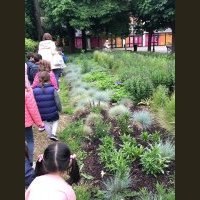
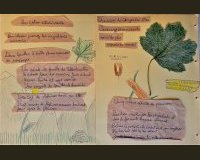
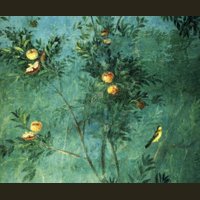
 Version imprimable
Version imprimable